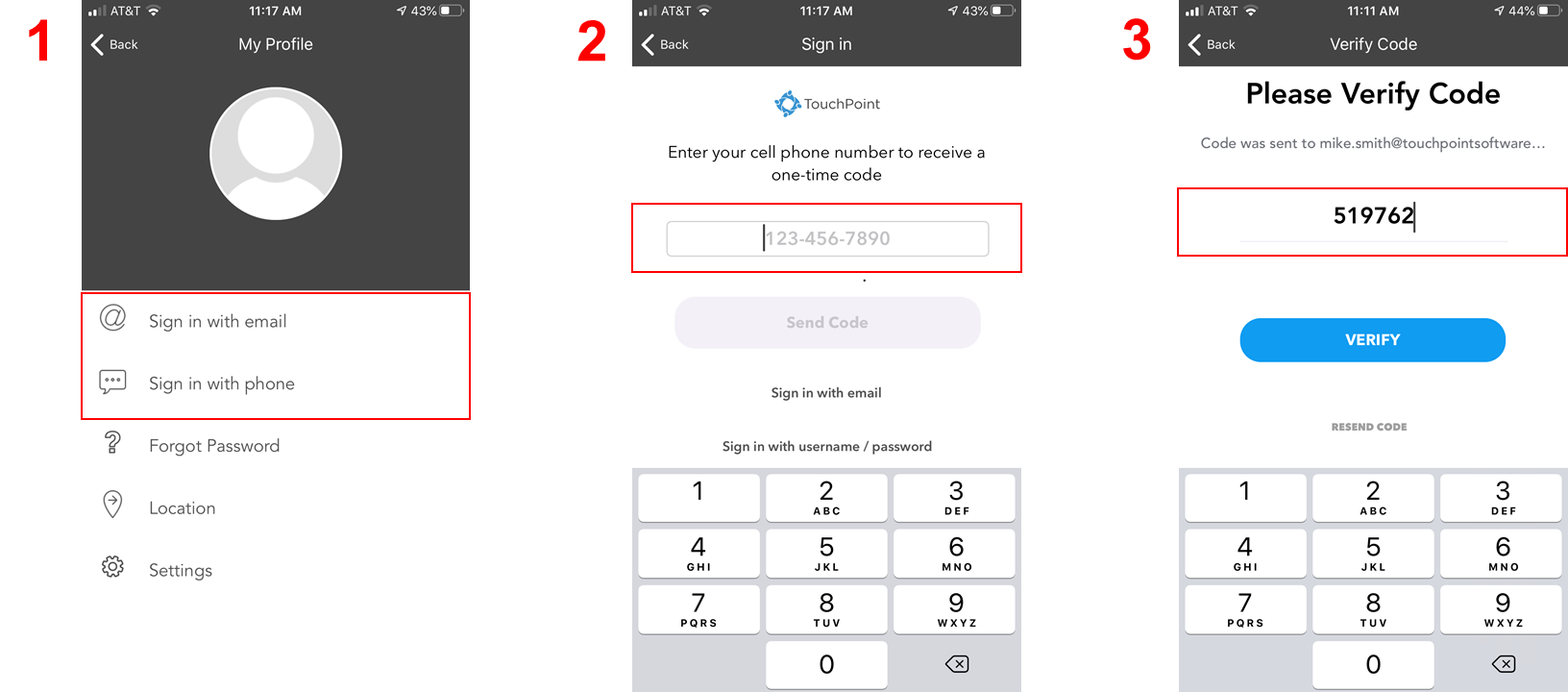Mobile Quick Sign in¶
With Quick Sign in, mobile users can sign into the app using an email address or cell phone number. They will no longer need a username and password to sign in. This will reduce duplicates, remove potential frustration when signing in, lower the risk that online giving is done in another family member’s account, and offer many other benefits.
At sign in, users select the sign in method (email address or cell phone number) and are sent a six-digit code to enter to complete the sign in process.
System Configuration¶
To enable Quick Sign in for your custom mobile app, toggle the administration setting UseMobileQuickSignInCodes to True. This setting can be found on the Settings page, under the Features tab, in the Mobile App section. Additionally, contact Support so that we can enable this feature on our end.
Optionally, you can configure the following settings, also found on the Features tab and in the Mobile App section:
MobileQuickSignInSubject: Enter in this setting the subject line for the email users receive when they request an Quick Sign in code via email.
MobileQuickSignInCodeSMS: Enter in this setting the text of the SMS message users receive when they request an Quick Sign in code via phone.
And, to change the default email message users receive when they request a Quick Sign in code via email, you can add the HTML Content file MobileQuickSignInCodeEmailBody and add the desired message. The default email body is shown below. You can use it as a starting point for your modified email body.
For the messages referred to above, you can include the replacement codes:
{code} - for the security code
{church} - for the name of your church as supplied by the value of the NameOfChurch setting
The default email body is:
<h3>Here's your one-time mobile sign in code for {church}:</h3>
<h4 style="text-align:center;font-family:monospace">{code}</h4>
The default SMS message is:
{code} is your one-time sign in code for {church}
Twilio Configuration¶
In order to provide your app users the option to sign in with phone, you will need to have SMS enabled on your system. See Establish an Account with Twilio for information about how to establish an account with Twilio and set up SMS on your database.
You will also need to designate one of your Twilio groups for system use. The system will use one of the numbers in that group to send codes when users request. Click on the name of the Twilio group that should be used and check the box System SMS/Quick Sign In.
Tip
You can easily check if one of your groups has already been designated for system use. If so, it will have the words “Quick Sign In” to the right of the group name.
Ministry by Text (MBT) Configuration¶
In order to use Quick Sign in with MBT, you need to have SMS enabled on your system. See Establish an Account with Powered By Text (PBT) for information about how to establish an account with MBT and set up SMS on your database.
You will need to designate a Quick Sign in MBT group for users. The system will use this group to send codes when users request. Click on the name of the MBT group that should be used and check the box Use for quick sign-in (OTM). This will ignore the SMS Opt-In flag, thus eliminating the requirement for a user to be opted in to the group. They will need to have a valid cell phone (or email address) on their profile in order to utilize Quick Sign in.
Tip
You can easily check if one of your groups has already been designated for system use. If so, it will have the words “Quick Sign-In” to the right of the group name.
Using Quick Sign in¶
When Quick Sign in is configured for and a user signs in, they will be given the option to sign in with email or sign in with phone (provided SMS messaging is enabled on your database). If signing in with an email address, that email address must exist on the user’s record. If signing in with a phone number, that phone number must be the cell phone number on the user’s record.

After receiving the six-digit code via email or SMS, the app user should enter it when prompted and press the Verify button. They will then be presented with a list of usernames matching the supplied information. In most cases, there will only be one username in the list, but if family members are sharing the supplied email address or cell phone number, for example, there may be multiple. The final step is for the app user to click on the username that should be used and complete the sign in by entering a PIN and any biometric data (fingerprint or face ID) required by the app.
Latest Update |
04/05/2022 |
Updated wording surrounding Twilio and MBT configuration.
